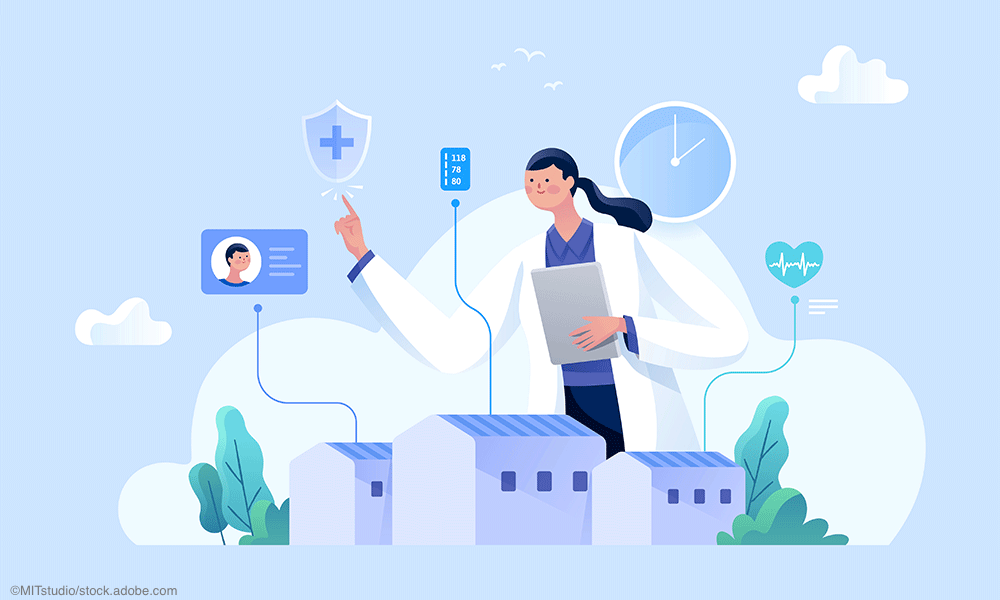Supporting maternal health with remote patient monitoring
For patients with gestational diabetes, if it's not controlled, high blood sugar can lead to high-risk pregnancies.
© MITstudio - stock.adobe.com

Remote patient monitoring (RPM) has secured its place within our healthcare system thanks to rapid increases in adoption over the past several years. RPM is most often associated with helping manage chronic diseases. With its value, versatility, and cost-effectiveness, we are now seeing RPM moving into a wider variety of specialty healthcare arenas, including maternal health.
Within maternal health, RPM is enabling practitioners to better support patients with gestational hypertension and gestational diabetes.
RPM for gestational hypertension and gestational diabetes
For patients with gestational hypertension, research shows that controlling climbing blood pressure helps keep the mother and baby safe and healthy, but effectively monitoring blood pressure during pregnancy and post-delivery can prove challenging. Contributing factors can include increased frequent office visits or unreliable self-reported blood pressure numbers.
As for patients with gestational diabetes, if it's not controlled, high blood sugar can lead to high-risk pregnancies. Mitigating the effects of gestational diabetes usually requires a combination of close monitoring of blood glucose levels, nutritional tracking, exercise, and, if warranted, medications and/or insulin injections.
Pregnant women who live in rural areas or who have health-related social needs can find that receiving additional in-person care is more difficult and expensive.
RPM provides substantial benefits to pregnant women with gestational hypertension and gestational diabetes. For pregnant women with gestational hypertension, they can be supported by blood pressure monitoring technology. For pregnant women with gestational diabetes, they would receive a blood glucose meter (i.e., glucometer) for blood sugar monitoring.
Using these RPM devices enables the real-time transmission of vital signs that allows the patient's healthcare team to identify and react to concerning trends quicker, resulting in fewer emergency situations and adverse outcomes while helping reduce the number of in-person appointments. When RPM device readings indicate a concerning trend, practitioners can engage with these patients to discuss their situation and recommend next steps. If a face-to-face interaction is warranted, a virtual visit may further eliminate the need for in-person care.
RPM's ability to help patients navigate and overcome barriers to care and accessing services can improve adherence to recommended treatment regimens, which contributes to better neonatal outcomes and increases in patient satisfaction and engagement.
Operational and financial value of RPM for maternal health practitioners
In addition to supporting improvement in clinical outcomes, RPM delivers substantial operational and financial value for maternal health practitioners. RPM enables practitioners and their staff to further streamline engagement with patients and expand access and care capacity with reduced administrative overhead.
From a financial perspective, RPM can deliver a worthwhile return on investment. Many commercial payers cover RPM, and RPM is covered by more than two-thirds of all state Medicaid programs. We are seeing efforts to convince the remaining Medicaid programs to cover RPM entirely or at least maternal monitoring as a standalone service given the growing women's health crisis. International data show the maternal mortality rate in the United States exceeds the rate in other high-income countries and continues to worsen. Rural counties experience higher rates of maternal morbidity and mortality.
What maternal health practitioners can expect to be paid for RPM services will vary by commercial payer or state for Medicaid patients. To get a general idea of what the reimbursement may look like, we can look at what Medicare pays on average for RPM in 2025.
Medicare reimburses about $20 for initial patient enrollment into an RPM program, with the payment covering device setup and delivering patient education on using the device and receiving RPM services. Medicare provides a base monthly payment of about $43 for monitoring data transmitted from the RPM device and any ongoing device management.
Medicare then provides a monthly payment of about $48 for at least 20 minutes of communication with the patient about their transmitted data and any changes to the care management plan. Medicare provides an additional monthly payment of about $38 if communication exceeds 40 minutes but is fewer than 60 minutes. If communication requires 60 or more minutes, Medicare provides a final monthly payment of $38.
A practice will typically furnish about 20 minutes of RPM care management each month to a single patient, bringing the total monthly reimbursement to around $91 per patient. However, a single RPM patient can earn a practice up to around $167 in monthly Medicare reimbursement.
Let's say a practice enrolled 60 patients with gestational hypertension and 40 patients with gestational diabetes, and these 100 total patients all received 10 months of RPM services. Assuming these patients required the minimum amount of monthly RPM support (20 minutes), the practice would generate around $93,000 — (100 x $20) + (100 x $91 x 10).
Undeniable benefits of maternal health RPM
RPM is a great service for maternal health practitioners to offer pregnant patients with gestational hypertension and gestational diabetes. It can improve disease management and outcomes, reduce patient expenses and time allocated to monitoring their disease, provide practices with a new revenue stream and ability to support more patients, enhance staff productivity, and strengthen overall the delivery of care — all without requiring a substantial financial investment. Given these benefits, it's not surprising that RPM is quickly cementing itself as an essential service for pregnant women.
Lucy Lamboley is vice president of operations for Prevounce Health, a healthcare software company that simplifies the provision of clinical preventive services, chronic care management, and remote patient management.